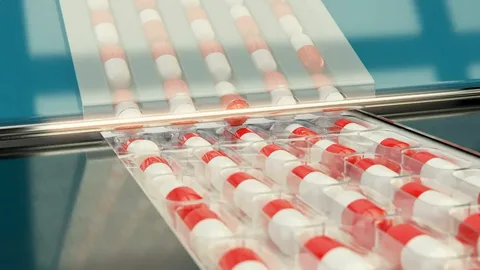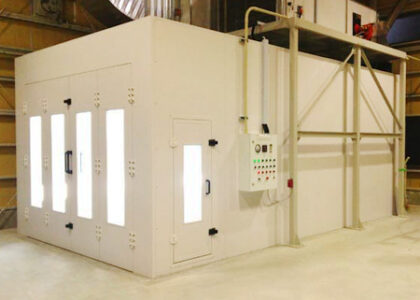The global market for anti-counterfeit pharmaceutical packaging is expected to reach $48.5 billion by 2027, growing at a CAGR of 12.1% during the forecast period 2020 to 2027.
Anti-counterfeit pharmaceutical packaging is an essential tool for safeguarding consumers from counterfeit drugs. The increasing incidences of counterfeit drugs in the market are driving the demand for anti-counterfeit pharmaceutical packaging solutions. Counterfeit drugs are a serious public health threat as they can cause severe side effects or even death.
The use of anti-counterfeit technologies such as RFID, holograms, and barcode scanning is increasing in the pharmaceutical industry to combat counterfeiting. RFID technology is expected to hold a significant share of the anti-counterfeit pharmaceutical packaging market due to its ability to provide real-time tracking and monitoring of products.
Request a Sample Report with Table of Contents @ http://www.futuremarketinsights.com/reports/sample/rep-gb-2385
The packaging segment is expected to hold the largest share of the anti-counterfeit pharmaceutical packaging market. The packaging segment includes various types of packaging such as bottles, blister packs, and pouches. The use of smart packaging solutions, such as RFID and holograms, is increasing in the packaging segment to combat counterfeiting.
The pharmaceutical segment is expected to grow at the highest CAGR during the forecast period. The increasing incidences of counterfeit drugs in the pharmaceutical segment are driving the demand for anti-counterfeit pharmaceutical packaging solutions. The use of anti-counterfeit technologies such as RFID, holograms, and barcode scanning is increasing in the pharmaceutical segment to combat counterfeiting.
North America is expected to hold the largest share of the anti-counterfeit pharmaceutical packaging market due to the increasing incidences of counterfeit drugs in the region. The U.S. Food and Drug Administration (FDA) is taking several measures to combat counterfeiting, such as implementing new regulations and increasing enforcement efforts.
The Asia Pacific anti-counterfeit pharmaceutical packaging market is expected to grow at the highest CAGR during the forecast period. The increasing incidences of counterfeit drugs in the region, and the growing awareness about the benefits of anti-counterfeit pharmaceutical packaging are driving the demand for anti-counterfeit pharmaceutical packaging solutions in the region.
In conclusion, the anti-counterfeit pharmaceutical packaging market is expected to witness significant growth in the forecast period, driven by the increasing incidences of counterfeit drugs in the market. The use of anti-counterfeit technologies such as RFID, holograms, and barcode scanning is increasing in the pharmaceutical industry to combat counterfeiting. The packaging segment is expected to hold the largest share of the anti-counterfeit pharmaceutical packaging market, while the pharmaceutical segment is expected to grow at the highest CAGR during the forecast period.
Between 2022 and 2027, the global anti-counterfeit pharmaceutical packaging market is anticipated to expand at an extravagant CAGR of 8.4%. By 2027, it might total US$ 149.1 billion.
The market for anti-counterfeit packaging was estimated to be worth around US$ 70 billion in 2018. This means that anti-counterfeit technology for pharmaceuticals represents an opportunity worth about US$ 3.5 billion.
Get In Touch With Our Team For 30% Flat Discount:
Developing Economies to Hold Promising Investment Opportunities during the Forecast Period
China & Japan cumulatively account for more than half of the total Asia Pacific anti-counterfeit pharmaceutical packaging market. This is accredited to the fastest-growing pharmaceutical market, particularly on the back of increasing number of population, coupled with rising regulations in pharmaceutical sector of China and India. The economical manufacturing environment and developing economy are vital factors driving the anti-counterfeit pharmaceutical packaging market in the APAC region.
Growing penetration of local manufacturers in their respective regions also fuels the anti-counterfeit pharmaceutical packaging market growth in the region. Furthermore, developing economies of Latin America such as Mexico and Argentina are expected to have potential in the anti-counterfeit pharmaceutical packaging market during the forecast period. Illegal sale of pharmaceutical drugs is a growing concern, most particularly in developing countries of Latin America where the lack of healthcare concern forces people to seek cheaper drugs.
This is hamstringing the anti-counterfeit pharmaceutical packaging market growth. In the absence of effective system and regulations, the market of counterfeit drugs and other medical supplies has been increased. Also, semi-legal copying of branded drugs by legitimate local companies would remain a high-profile problem. All these factors will create an impact on the growth of the anti-counterfeit pharmaceutical packaging in the coming years.
Approach towards Electronic Track and Trace to Secure the Supply of Drugs
For secure supply of drugs from manufacturers to end users, one of the key requirements is the ability to trace, validate, and verify the authenticity of the drug at each and every stage of the supply chain. It is expected to boost the demand for anti-counterfeit pharmaceutical packaging in the near future. In electronic track and trace technology, each unit is serialized and allows building the drug pedigree.
These pedigrees include information about manufacturers, distributors, and wholesalers who handles the drug. This helps in tracing the product at any stage and reduces counterfeiting, which stimulates the anti-counterfeit pharmaceutical packaging market growth.
Increased Number of Self-prescribed Patients Opting for Less Expensive Pharma Products
~ 5% of the U.S adults are using medication without any professional prescription. Increase in number of self-prescribed patients is hampering the anti-counterfeit pharmaceutical packaging market. Sometimes, end users of pharma products opt for counterfeit products, as they are less expensive compared to the original medications. This perception of patients is restraining the anti-counterfeit pharmaceutical packaging market growth.
Global Anti-Counterfeit Pharmaceutical Packaging Market: Competitive Landscape
Anti-counterfeit pharmaceutical packaging manufacturers have taken steps to tackle the menace of counterfeited medicines through innovative packaging techniques, which is still in the infancy stage but future looks promising. Advancement in technology is expected to spur the demand for anti-counterfeit pharmaceutical packaging products. Large pharmaceutical companies such as Pfizer and GlaxoSmithKline have introduced RFID tags on the packaging of Viagra and Trizivir, an HIV treatment product, which is driving the anti-counterfeit pharmaceutical packaging market growth.
Some of the key players in the global anti-counterfeit pharmaceutical packaging market are Alien Technology, ATL Security Label Systems, CCL Industries, SICPA Holdings, Schott AG, Gerresheimer AG, Klockner Pentaplast Group, Ardagh Group S.A., Nipro Corporation, Authentix Inc., TruTag Technologies, Inc., Zebra Technologies Corporation, Alpvision SA, OpSec Security Inc., Savi Technology Inc., 3M, and Stevanato Group.
Request TOC@ https://www.futuremarketinsights.com/toc/rep-gb-2385
Key Segments Covered in Anti-Counterfeit Pharmaceutical Packaging Industry Research
By Packaging Format :
- Bottles & Jars
- Vials & Ampoules
- Blisters
- Trays
- Pouches & Sachets
- Others (Tubes, Syringes, etc.)
By Printing Technology :
- RFID
- Security Inks & Coatings
- Security Seals
- Holograms
- Mass Encryption
- Barcode
- Mass Serialization
By Adhesion :
- Permanent
- Removable
- Repositionable
By End-application :
- Pharma & Biological
- Medical & Supplies
- Gloves
- Scissors
- Syringes & Needles
- Surgical Tapes
- Others
- Medical Equipment
- Surgical
- Therapeutic
- Diagnostic
Related Links –
https://gezelligkletsen.nl/read-blog/23089
https://ai.ceo/read-blog/22086
https://waappitalk.com/read-blog/29030
https://tokemonkey.com/read-blog/115770
About Future Market Insights, Inc.
Future Market Insights, Inc. is an ESOMAR-certified business consulting & market research firm, a member of the Greater New York Chamber of Commerce and is headquartered in Delaware, USA. A recipient of Clutch Leaders Award 2022 on account of high client score (4.9/5), we have been collaborating with global enterprises in their business transformation journey and helping them deliver on their business ambitions. 80% of the largest Forbes 1000 enterprises are our clients. We serve global clients across all leading & niche market segments across all major industries.
Contact:
Future Market Insights Inc.
Christiana Corporate, 200 Continental Drive,
Suite 401, Newark, Delaware – 19713, USA
T: +1-845-579-5705
For Sales Enquiries: sales@futuremarketinsights.com
Browse latest Market Reports: https://www.futuremarketinsights.com/reports


